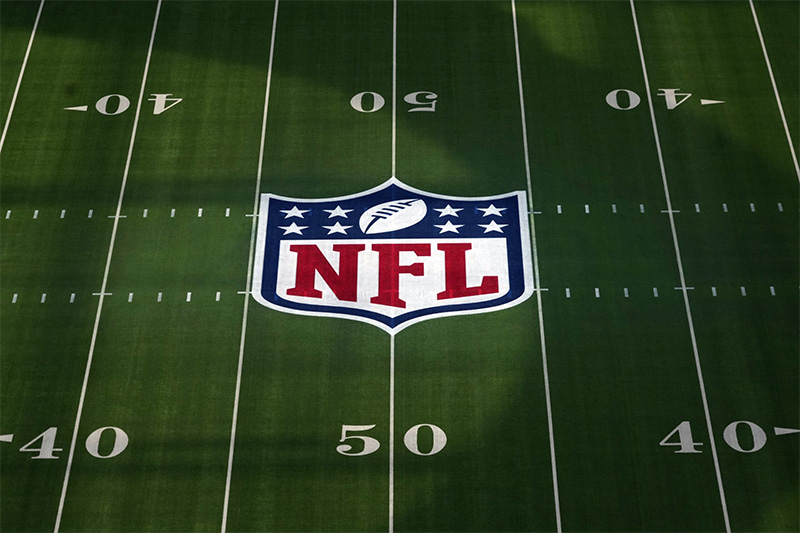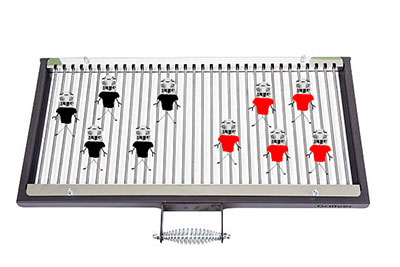
I’m a huge American football fan, but not too long ago, a guy I was flir—uh, talking to—wanted me to explain what a cornerback is. I kind of stared at him and said something so dumb I have forced myself to forget it. Think, “Uh, he stands on the corner, doo doo doo.”
What I realized then is that I love the game, but I’m not up on all the lingo. If you’re having the same issue, let’s talk about some basics and the grammar they involve.
Get a free sample proofread and edit for your English document.
Two professional proofreaders will proofread and edit your English document.
The Gridiron
The playing field, or gridiron, is made up of ten sections of ten yards each, making up a hundred yards. The field is flanked by two scoring areas, or end zones. The nickname comes from early hatch-like fields, which resembled gridirons (i.e., grills).

The Team
When you refer to a team, it’s in the singular, as in “the team runs onto the field.” But when you refer to the team by its name, it’s plural, as in, “The Saints run onto the field.”
The total number of players on an NFL team is capped at fifty-three, whereas college teams can get as big as a hundred. Of those, only eleven members of each team can be on the field at the same time. So the total team is made up of (at least) eleven offensive players and (at least) eleven defensive players, their backups, and members of the special teams (e.g., kickers, holders).
There are eleven members on each team, each with designated positions. The offense has the ball, and the defense tries to keep the offense from doing anything with the ball. If the defense gets their hands on the ball (i.e., there’s a turnover), they instantly become the offense (and the offense becomes the defense) without changing players.
However, the offense and defense are also specific players. When people talk about how the defense made a touchdown or safety, they mean the players designated as the defense made that play, even though they were acting as the offense at that time.
Scoring
Touchdown (6 points): When the opposing team gets the ball into the opponent’s end zone, whether by running or catching a pass, they score a touchdown.
Extra point/point after (1–2 points): After a touchdown, the scoring team may kick the ball through the uprights (the Y-shaped structure at each end zone) for one point or run/pass the ball into the end zone for a two-point conversion.
Field goal: If the offense isn’t going to make it into the end zone for a touchdown, they can kick the ball through the uprights for three points.
Safety: Two points can also be earned when the defensive ball carrier is tackled in their end zone or when the offensive ball carrier in their end zone commits a foul (infraction of play).
Positions: Offense
I’m noting how many of each position may be on the field during a specific play. Different players are used for different plays, so there may be two running backs for one play and three for the next. The players run on and off the field from the sidelines in preparation for play. The number of different plays that may be called is infinite.
Quarterback (1): This is who calls the plays (with help from the coach) and throws or hands off the ball (i.e., directly gives the ball to another player). They direct the play (i.e., the series of motions after the beginning of the action, or the snap.) When they just pretend to hand off the ball and then pass it, that’s play action or a play-action fake.
The quarterback has two main options for every play: they can pass the ball, or they can hand it off. As a third option, they can run the ball themselves, which is called the quarterback sneak, but this is a risky idea because the defense can hurt this central player and put them out of the game. When they opt for this run, they’ll kneel or “take a knee” to end the play before they get properly tackled.
Center (1): This player takes the ball off the line of scrimmage (i.e., the starting position of the ball on that play) and hands it back to the to the quarterback, who stands directly behind them (i.e., “the snap). After that they usually act as a guard, blocking the defensive players from getting to the quarterback.
Offensive Guard (2): These guys flank the center and guard the quarterback after the snap. When the quarterback is getting ready to throw the ball, they want to stay protected by the guards, or “stay in the pocket.”
Offensive Tackle (2): They flank the offensive guard, but instead of defending the quarterback, they’re more interested in blocking (i.e., getting bodily in the way of) the defense during passing and running plays. Basically, they are in charge of protecting whoever has the ball.
Running Backs (1–3) and Receivers (1–3): These take over a hand-off (backs) or catch a pass (receivers). They have specialties.
Fullback (1): This is a running back located behind the middle of the line who can take the ball up the field or block the defensive players to fill holes during running plays. They can also sometimes catch short passes.
Offensive Line (5): The offensive line has five offensive linemen, one each for a left tackle (LT), left guard (LG), center (C), right guard (RG), and right tackle (RT). Their job is to block the defense to allow the quarterback to run the play.
Wide Receivers (2): These players catch the ball. They are usually quite fast and have good hands (i.e., skill in catching) when they catch the ball despite being covered by the defense.
Tight End (1): This guy is both a receiver and an offensive lineman, depending on what play is called.
Punter (1): This guy kicks the ball when the offense decides to punt (kick) the ball down the field on fourth down so the defense will have to take over the ball as deep into their territory as possible.
Kicker (1): This guy starts off the play with a kick into the offensive territory (i.e., kickoff, for which the ball is put on a tee). He’s often the punter too.
Field Goal Kicker (1): Guess what he does.
Field Goal Holder (1): For the field goal, the center hikes the ball to the holder, who has to make sure the ball is lined up properly between their hands and the laces (on the ball) turned for the kicker to make the field goal.
Positions: Defense
Nose Guard (1): This guy faces off against the center. Once the ball is in play (after the snap), he tries to get to whoever is carrying the ball. He’s particularly important when the runner tries to go “up the middle,” or through the center of the defensive line.
Right/Left Tackle (2): These guys are the center of the defensive line. They go after the guy with the ball.
Defensive Ends (2): These guys line up (i.e., get ready to play) on the ends of the defensive line.
Inside/Middle/Outline Linebackers (2-4): These are the real muscle and force of the defense. They go after the receivers.
Cornerbacks (2): These two guys indeed don’t “stand on the corner.” They usually go farther to the side of the defense line than the defensive ends. They typically go after the wide receivers, but they can be called in for the blitz (i.e., a major offensive play to try to tackle, or sack, the quarterback before they can throw the ball).
The linebackers and cornerbacks together are called the secondary.
Safeties (2): Two more members of the secondary are the strong safety (positioned on the “stronger” side where the quarterback is more likely to throw) and the free safety (positioned on the other side).
Nickleback (1): When, quite rarely these days, there is a third cornerback or safety to cover the wide receivers on what is assumed a forced passing play, that’s the “nickleback” (and the name of that rock band).
There’s no position for kicking on the defensive team.
Julia H.
Get a free sample proofread and edit for your English document.
Two professional proofreaders will proofread and edit your English document.
Get a free sample proofread and edit for your document.
Two professional proofreaders will proofread and edit your document.
We will get your free sample back in three to six hours!